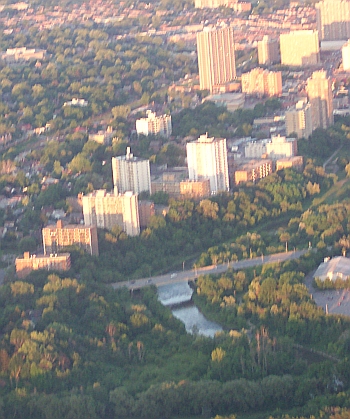|
William Arthur Johnson
Rev. William Arthur Johnson (1816–1880) was an amateur biologist, naturalist, microscopist, botanist, and ordained clergyman who lived in Canada. Biography Born in Bombay, India, he was a descendant of the Duke of Wellington, he was called Arthur. Johnson moved in Upper Canada in 1835, first settling in Port Maitland, Ontario, then to Toronto by 1848. He attended the Diocesan Theological Institute in Cobourg, Ontario and became a clergyman. He was a curate to Archdeacon A. N. Bethune at Cobourg. However, his tractarian tendencies made him unpopular and he was made rector of St.Philip's at Etobicoke, a remote village across the river from Weston. There, he established a school in 1865 that was to become Trinity College School in Weston, Ontario, where William Osler became a student. Johnson became the major early influence for Osler at this time, along with his friend James Bovell. A keen collector of both animal and vegetal specimens, Johnson was schoolmaster and rector of ... [...More Info...] [...Related Items...] OR: [Wikipedia] [Google] [Baidu] |
Biologist
A biologist is a scientist who conducts research in biology. Biologists are interested in studying life on Earth, whether it is an individual Cell (biology), cell, a multicellular organism, or a Community (ecology), community of Biological interaction, interacting populations. They usually specialize in a particular Outline of biology#Subdisciplines, branch (e.g., molecular biology, zoology, and evolutionary biology) of biology and have a specific research focus (e.g., studying malaria or cancer). Biologists who are involved in basic research have the aim of advancing knowledge about the natural world. They conduct their research using the scientific method, which is an empirical method for testing hypothesis, hypotheses. Their discoveries may have Applied science#Applied research, applications for some specific purpose such as in biotechnology, which has the goal of developing medically useful products for humans. In modern times, most biologists have one or more academic degre ... [...More Info...] [...Related Items...] OR: [Wikipedia] [Google] [Baidu] |
Weston, Toronto
Weston is a neighbourhood and former village in Toronto, Ontario, Canada. The neighbourhood is situated in the northwest of the city, south of Highway 401, east of the Humber River, north of Eglinton Avenue, and west of Jane Street. Weston Road just north of Lawrence Avenue is the commercial core of Weston, with many small businesses and services. Weston was incorporated as a village in the 19th century and was absorbed into the Borough of York in the late 1960s. York itself was amalgamated into Toronto in 1998. Description Weston's building stock consists mostly of Victorian homes east of the railway with apartment and condominium towers on Weston Road overlooking the Humber River valley. Weston's main shopping district is located on Weston Road between Church Street in the north and Wilby Crescent (just south of Lawrence Avenue) in the south. Most buildings in this area reflect early-mid-20th century Ontario town architecture, brick buildings with decorative masonry. The a ... [...More Info...] [...Related Items...] OR: [Wikipedia] [Google] [Baidu] |
Canadian Anglican Priests
Canadians (french: Canadiens) are people identified with the country of Canada. This connection may be residential, legal, historical or cultural. For most Canadians, many (or all) of these connections exist and are collectively the source of their being ''Canadian''. Canada is a multilingual and multicultural society home to people of groups of many different ethnic, religious, and national origins, with the majority of the population made up of Old World immigrants and their descendants. Following the initial period of French and then the much larger British colonization, different waves (or peaks) of immigration and settlement of non-indigenous peoples took place over the course of nearly two centuries and continue today. Elements of Indigenous, French, British, and more recent immigrant customs, languages, and religions have combined to form the culture of Canada, and thus a Canadian identity. Canada has also been strongly influenced by its linguistic, geographic, and e ... [...More Info...] [...Related Items...] OR: [Wikipedia] [Google] [Baidu] |

